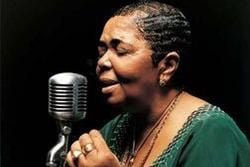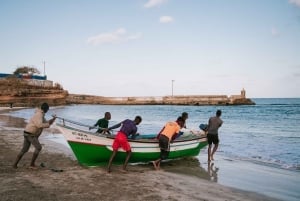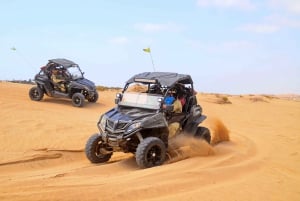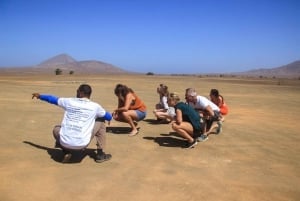Cape Verde Music
Morna, Evora and Beyond
Sometimes small countries give the world big things. This is the case with Cape Verde´s traditional music. The mixture of the Portuguese influence with the music of the African slaves that were brought into the uninhabited islands of Cape Verde rapidly evolved to create a series of different styles that are among the most popular musical traditions in the world.
MORNA AND ITS BAREFOOT QUEEN
The morna, which is connected to the Portuguese fado and akin to the spirit of the blues, is the most popular type of Cape Verde music. The name morna comes from the English "to mourn," and the music itself is full of sodade (saudade in the original Portuguese); a feeling of melancholy similar to that expressed in Uruguayan-Argentinean tango and Brazilian bossa nova.
Cape Verde and morna have given the world a musical superstar, as unassuming as she may be, in the shape of Césaria Evora . Also known as the Barefoot Diva, Evora has taken the seafaring melancholy of the Cape Verdian spirit all over the world.
Traditional morna is usually performed by a vocalist accompanied by a guitar, violin, bass guitar, piano and often a cavaquinho, which is a Portuguese instrument similar to the ukulele. The songs commonly talk about love and longing for lost love as well as nationalism and patriotic feelings.
Many of the mornas talk about the love of the country and the suffering that Cape Verdians have endured over centuries; the draughts, the war for independence, and the massive migrations of locals looking for better opportunities away from their beloved homeland.
The language of the morna is Cape Verdian Creole or Criolo, which is the native language of Cape Verde. One of the most remarkable things about the success of morna and Evora in particular is the fact that the music transcends this obscure language, spoken only by Cape Verdians, and people can get the essence of morna even when they do not understand the words.
Multi-instrumentalist and composer Tito Paris , who developed his career in Lisbon, has also achieved much international recognition, as one of the most important figures of morna.
In later years, morna has also given the world other remarkable singers such as Mayra Andrade , who has a very distinct style and can often be seen touring Europe and the equally popular Lura , who actually recorded a duet with Evora on a tribute song she wrote for the diva.
Batuko and Women Empowerment
Batuko (batuque) is much more than a musical genre; it is a form of communal expression including dance, drumming and song that has been empowering Cape Verdian women for centuries. As the local culture has traditionally been completely male-dominated, batuko, where women get together in a circle to sing and dance while playing complex drumming patterns, has historically been a way for them to find a voice and a form of expression, as well as an opportunity to share a cultural experience with other women.
The female dancers contort and gyrate their hips at the rhythm of the drums until a musical crescendo that marks the beginning of the next dancer´s solo, as the entrancing music and sensual dance moves combine to create quite a spectacle.
Batuko can only be found on the island of Santiago today, but there is evidence that it existed on other Cape Verde islands in the past.
The freedom of Funana
The funana is an accordion-based musical form, where the beat is carried by a traditional percussion instrument called the ferrinho. Just like batuko, it comes from the island of Santiago.
Funana is characterized by repeated call and response vocal patterns. It is deeply-rooted in African music and extremely upbeat. In fact, Cape Verdians can´t get enough of funana. If you visit one of the islands, you are bound to hear it everywhere.
The themes of funana commonly include social criticism and everyday life topics using metaphors, irony and popular sayings. It is said that this popular music took its name from a combination of the names of a great accordion player and a great ferrinho player called Funa and Nana.
Coladeira Fun
The traditional coladeira is usually played with a guitar, a cavaquinho, percussion instruments, and a solo instrument. The themes of coladeira usually involve either satire and social criticism or jokes and playful topics. Coladeira is also a ballroom dance. This varied-tempo music is quite popular on the islands.
Music Festivals
The Baia das Gatas festival takes place in August on the island of Sao Vicente. Last year, featured artists included Brazil´s Calcinha Preta, Buraka Som Sistema from Portugal and the Angolan Paulo Flores, plus some of the top local stars.
The Sal International Music Festival is a multifold cultural event that takes place over a large festival area. It usually includes performances by both international and local stars. The Festival features a press area and an electronic space, and it´s a celebration of world music.












